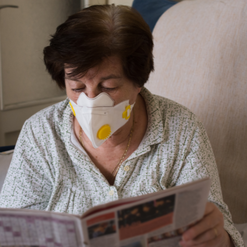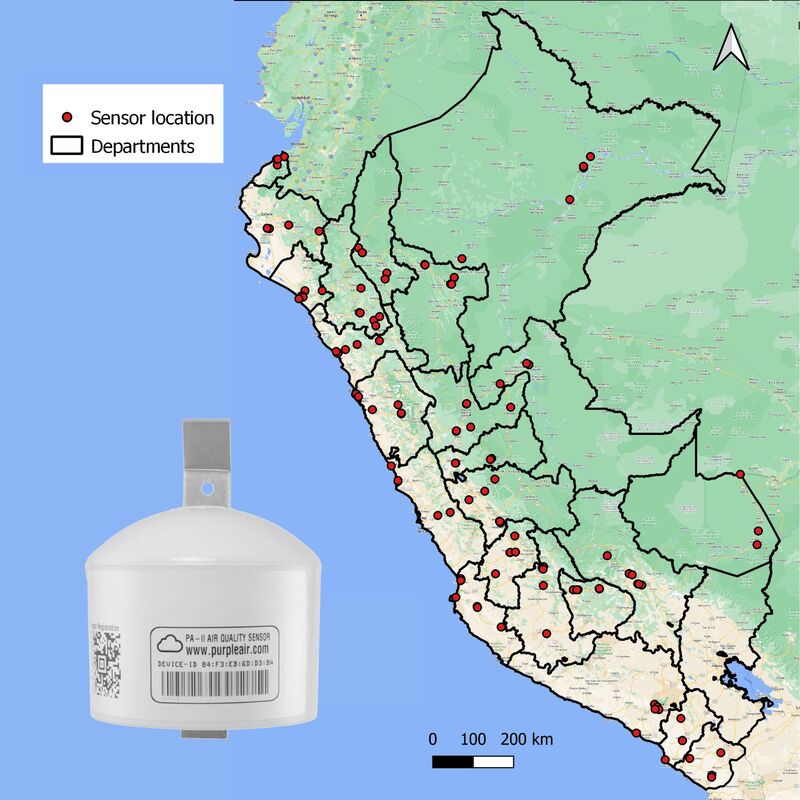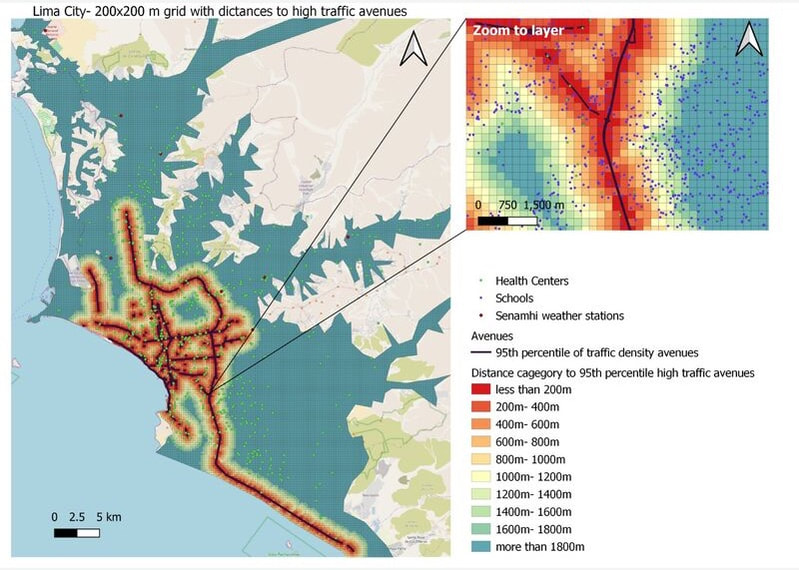Phase 2: Research Projects
Air pollution is the most important environmental risk factor worldwide, as per the latest Global Burden of Disease Study. During our previous GEOHealth Hub centered in Peru, we published 21 articles on air pollution research and identified important gaps in air pollution data nationwide, to be addressed in this proposal. Ambient air pollution (AAP) is a priority in Peru, especially in big cities like Lima (2016 mean PM2.5 of 25 μg/m3), and Arequipa (2019 mean PM2.5 of 72 μg/m3), far above the WHO recommended annual level of 10 μg/m3. The overall objective of this renewal application is to build capacity in AAP research in Peru and study the association between AAP and cardiovascular and respiratory conditions, including COVID-19, and Alzheimer’s disease (AD) where the association with AAP is not well established. Specific Aims are as follows:
|
Estimate the short and long-term effects of AAP on cardiorespiratory disease and Alzheimer’s disease in Peru.
Mitigation strategies to reduce greenhouse gas emissions under the 2015 Paris accord will lead to reductions in AAP and improvements in health. We will update current 2010-2016 PM2.5 estimates (1-km2 resolution) through December 2025, build a new model for NO2 in Lima, and develop an atmospheric model of PM2.5 concentrations (5-km2 resolution) across Peru combining remote sensing with on-ground air pollution monitoring data. We will develop a database of emergency room visits and hospital outcomes in major hospitals in Peru. We will construct exposure-response curves of PM2.5 with cardiorespiratory hospitalizations in adults and calculate the decrease in mortality attributed to PM2.5 under different greenhouse gas mitigation scenarios as proposed in the Peruvian Nationally Determined Contributions under the 2015 Paris accord. Hypothesis 1c: Higher AAP is associated with Alzheimer’s disease and fronto-temporal dementia. We will collaborate with a leading neurology clinic in Lima on an ongoing study of Alzheimer’s and fronto-temporal dementia to analyze the association between historical NO2 and PM2.5 estimates and incident cases between 2020 and 2024. We anticipate over 500 cases and 500 controls. We will also assess a history of COVID-19 among cases/controls. |
|
Evaluate the effectiveness of different traffic mitigation strategies on traffic count, AAP concentrations and hospital outcomes for COPD and asthma in Lima, Peru.Alternative mitigation strategies including incremental replacement of the existing car fleet with electric vehicles and mass-transit solutions provide cost- effective strategies to reduce AAP concentrations and improve health. We seek to model the relation between traffic count, AAP, and hospital outcomes, and to identify policy interventions that best mitigate traffic-related air pollution (TRAP). We will evaluate the effectiveness of Pico y Placa introduced in 2019 vs. alternative strategies (e.g., bans on older vehicles, better regulation on emission inspections, replacement of existing fleet with electric vehicles, congestion charges, or new mass-transit) on traffic count, AAP and hospital outcomes using data between 1/2016 and 12/2025. We will a) use an interrupted time series to model the effect of Pico y Placa on traffic count, PM2.5 and NO2, the number of ER visits, and hospitalizations for COPD and asthma, b) develop exposure-response curves for traffic count and AAP with ER visits, and hospital outcomes; and, c) conduct a life cycle assessment of Pico y Placa vs. alternative strategies to reduce AAP and improve health.
|

Study AAP and COVID-19 and non-COVID-19 pneumonia in Lima and Arequipa, and assess whether severe COVID is associated with long-term cognitive deficits.
1) Higher AAP is associated with higher risk of COVID and non-COVID pneumonia. Peru has been hit hard with COVID-19, with the highest death rate in the world. We will evaluate the relationship between short and long-term AAP and incident COVID-19 cases and deaths, and case fatality rate, in the general population of Lima and Arequipa during the pre-vaccination period (March 2020 to March 2021). Exposures will be assigned to cases using the models in Aim 1, based on residence. We will extend these models to non-COVID-19 pneumonia between 2010 and 2025. 2) Severe COVID affects cognitive function. We will leverage our access to a prior trial population to compare cognitive function in 100 severe COVID-19 cases (who were hospitalized and required >6 L/min of supplemental oxygen) at 2-4 years after their hospitalization, with 100 age-, sex- and neighborhood-matched controls, using the Telephone Interview for Cognitive Status (TICs) questionnaire. We also have access to a Lima data base of 531 hospitalized COVID cases and over 10,000 non-severe cases; we will explore the possibility of assessing cognition in severe vs non-severe cases (via TICs), and possible interactions with AAP. Impact: Peru lacks high quality air pollution data. We have assembled a multidisciplinary research team to develop novel atmospheric models that combine remote-sensing and ground monitor data to estimate AAP and study its relationship with health outcomes.
1) Higher AAP is associated with higher risk of COVID and non-COVID pneumonia. Peru has been hit hard with COVID-19, with the highest death rate in the world. We will evaluate the relationship between short and long-term AAP and incident COVID-19 cases and deaths, and case fatality rate, in the general population of Lima and Arequipa during the pre-vaccination period (March 2020 to March 2021). Exposures will be assigned to cases using the models in Aim 1, based on residence. We will extend these models to non-COVID-19 pneumonia between 2010 and 2025. 2) Severe COVID affects cognitive function. We will leverage our access to a prior trial population to compare cognitive function in 100 severe COVID-19 cases (who were hospitalized and required >6 L/min of supplemental oxygen) at 2-4 years after their hospitalization, with 100 age-, sex- and neighborhood-matched controls, using the Telephone Interview for Cognitive Status (TICs) questionnaire. We also have access to a Lima data base of 531 hospitalized COVID cases and over 10,000 non-severe cases; we will explore the possibility of assessing cognition in severe vs non-severe cases (via TICs), and possible interactions with AAP. Impact: Peru lacks high quality air pollution data. We have assembled a multidisciplinary research team to develop novel atmospheric models that combine remote-sensing and ground monitor data to estimate AAP and study its relationship with health outcomes.


